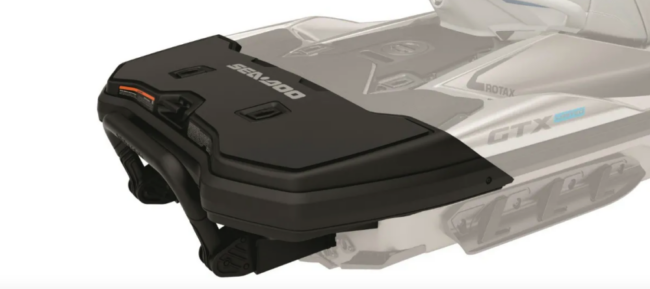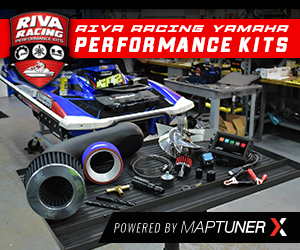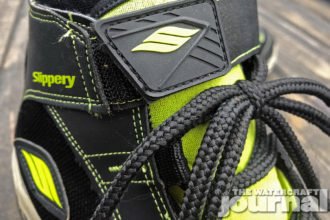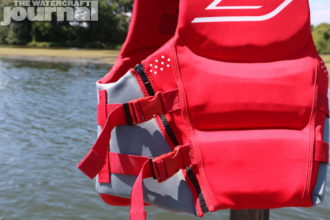
A little over 4 years ago, The Watercraft Journal introduced the PWC community to its “Long Hauler” Auxiliary Fuel System Kit, designed to work with all modern 4-stroke runabouts – except for any post-2011 Sea-Doos. Considering that Sea-Doo accounts for over 50-percent of all new units sold year-to-year, you’d think we’d make every effort to accommodate these owners…but doing so is far more complicated than many would think.
This article is going to explained how our system works without any cutting or drilling, and how easily it can be installed and removed; as well as why updates to Sea-Doo’s fuel system from the factory in 2012 made using our kit neigh impossible without major modifications or unsafe fuel plumbing – especially for the layman enthusiast to perform. Lastly, we’re going to offer easy and readily available solutions for bringing plenty of fuel for long rides.
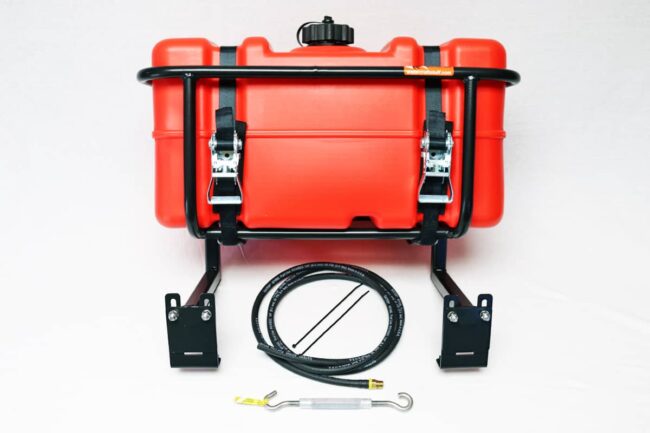 Self-Siphoning Tanks & “The Long Hauler” Auxiliary Fuel System Kit
Self-Siphoning Tanks & “The Long Hauler” Auxiliary Fuel System Kit
Siphon-style fuel systems are well over 100-years old. Describing the process as simply as possible, when the engine draws gasoline from the factory-supplied fuel cell, it creates negative pressure (or vacuum). Typically, this vacuum draws in air through a breather tube vented outside, equalizing the pressure in the fuel cell. A siphon-style fuel system (like WCJ’s Long Hauler Kit) replaces that vent tube with a fuel line plumbed into a second vented fuel tank.
This means that as the engine pulls gasoline from the factory fuel cell, the vacuum created will draw the gasoline from the auxiliary (backup) tank before finally pulling in air vented through the second tank – and all without interrupting the normal mechanical operation of the vehicle. And because the auxiliary fuel is pulled in by vacuum, the line experiences zero pressure, ensuring very, very low chances of fuel leakage.
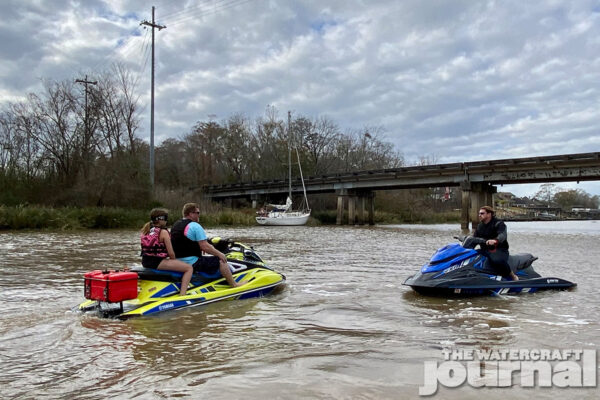
Moreover, as long as the nipple connecting the fuel cell to the vent tube is accessible, swapping out the tube for a second fuel line can take a matter of seconds. Both fuel cells from Yamaha and Kawasaki are well within reach (once removing the access panel in the front storage bin). In recent years, Yamaha reconfigured its tank ventilation to improve air flow during fuel fill-ups, but the traditional vent tube begins a little higher up at a T-fitting.
For those running a 2004-through-2011 Honda Aquatrax 4-stroke, and pre-2021 Yamaha WaveRunner 4-stroke or any Kawasaki JetSki 4-stroke, the process is as simple as described: locate the nipple in the tank that connects to a vent tube, disconnect the tube and replace with a fuel line running to an auxiliary fuel tank. Because the line isn’t pressurized, a simple plastic ziptie or hose clamp can be used to secure the fuel line to the plastic nipple.
So How Come it Won’t Work for Sea-Doo?
Prior to 2012, Sea-Doo 4-stroke watercraft operated in very much the same way as the other brands, ventilating their fuel cells through a dedicated tube to the outside atmosphere – making use of these kits possible. Unfortunately, Sea-Doo made a sweeping change for 2012, opting to ventilate their fuel tanks through a vented gas cap. The vented gas cap simplified the fuel system (reducing the number of parts) by making the filler neck both the fuel ingress line and vent tube.
A solution we considered was to source (or develop) a solid, non-vented cap with a port or nipple (similar to those found on older dirt bikes and ATVs) where the auxiliary fuel line could be plumbed. This proved problematic as trying to route the fuel line to the rear would either need to hang loosely in the footwell (which was unacceptable) or be pinched off by many of the “splash guards” Sea-Doo has in place to keep fuel from spilling during fill-ups.
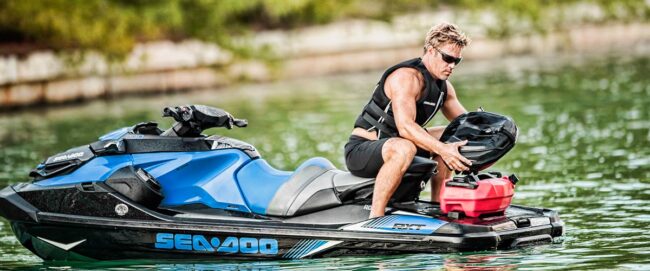
A second consideration was to install our own vent line by again, replacing the vented cap with a solid cap; but this time replace the filler neck with our own customized hose with a bung for a vent line. While this would work and allow a fuel line to be routed safely through the engine compartment, accessing the fuel tank (specifically in the popular ST3 platform) is particularly difficult without significant disassembly – making a quick removal of the system all but impossible.
In all, each solution that we explored either needed expensive additional parts or required permanent alterations to the watercraft that we simply didn’t feel comfortable asking everyday Sea-Doo owners to perform. (When asked, most couldn’t even locate their fuel tank nonetheless be expected to modify it. – Ed.) While not offering an application of our Auxiliary Fuel System Kit costs us considerable sales, we weren’t comfortable offering an inferior or unsafe product.

What Are My Options for Long Distance Rides?
Thankfully, both Sea-Doo itself and the aftermarket provide very accessible solutions. While none offer a self-feeding auxiliary fuel system that will supplement your Sea-Doo’s fuel supply, bringing several gallons of added fuel has never been easier. Certainly, the introduction of the LinQ system in 2018 made bringing a small quantity of added gasoline a breeze. BRP’s stackable 4-gallon fuel caddy allowed the adventurer to tote another 4-gallons without tools or an added rack.
With the addition of the Fish Pro Rear Deck Extension, a second pair of LinQ mounts meant two caddies could accompany you but at the cost of permanently modifying your Sea-Doo. This addition became an immediate sensation for “long haulers” until Sea-Doo rolled out its LinQ Multi Cargo Rack, allowing (when properly arranged with additional LinQ mounts) three of Sea-Doo’s 5-gallon Fuel Caddies. With 15-gallons of fuel aboard, any Sea-Doo equipped with the LinQ Multi Cargo Rack touts more fuel capacity than those using our own Long Hauler kit.
This All Sounds Great! What Are the Downsides?
Packing a lot of added fuel can radically open up your range of exploration, which is a great thing…right? Only if you plan appropriately. Packing an extra 70-to-100 pounds of fuel can impact your PWC’s fuel consumption. Likewise, you’ll want to verify that you’ll either have enough fuel to reach your destination and return safely, or find a fuel station that is open and has the minimum octane required by your manufacturer. A lower grade fuel might get you home, but your engine’s computer will compensate for the low octane rating by increasing the amount of fuel used.
Lastly, toting all of that extra weight over the transom of a PWC will radically alter the pitch (or trim) of your ski as well as how it operates through chop. This can produce a pendulum effect and cause extreme jolts and jostles strong enough to break loose whatever hardware you’re using to secure your fuel. We’ve seen no small number of very expensive gas cans and powder coated racks lost to the sea due to cheap mounting hardware, loose straps or inferior build quality. As a final note: always re-check your equipment throughout your ride.









